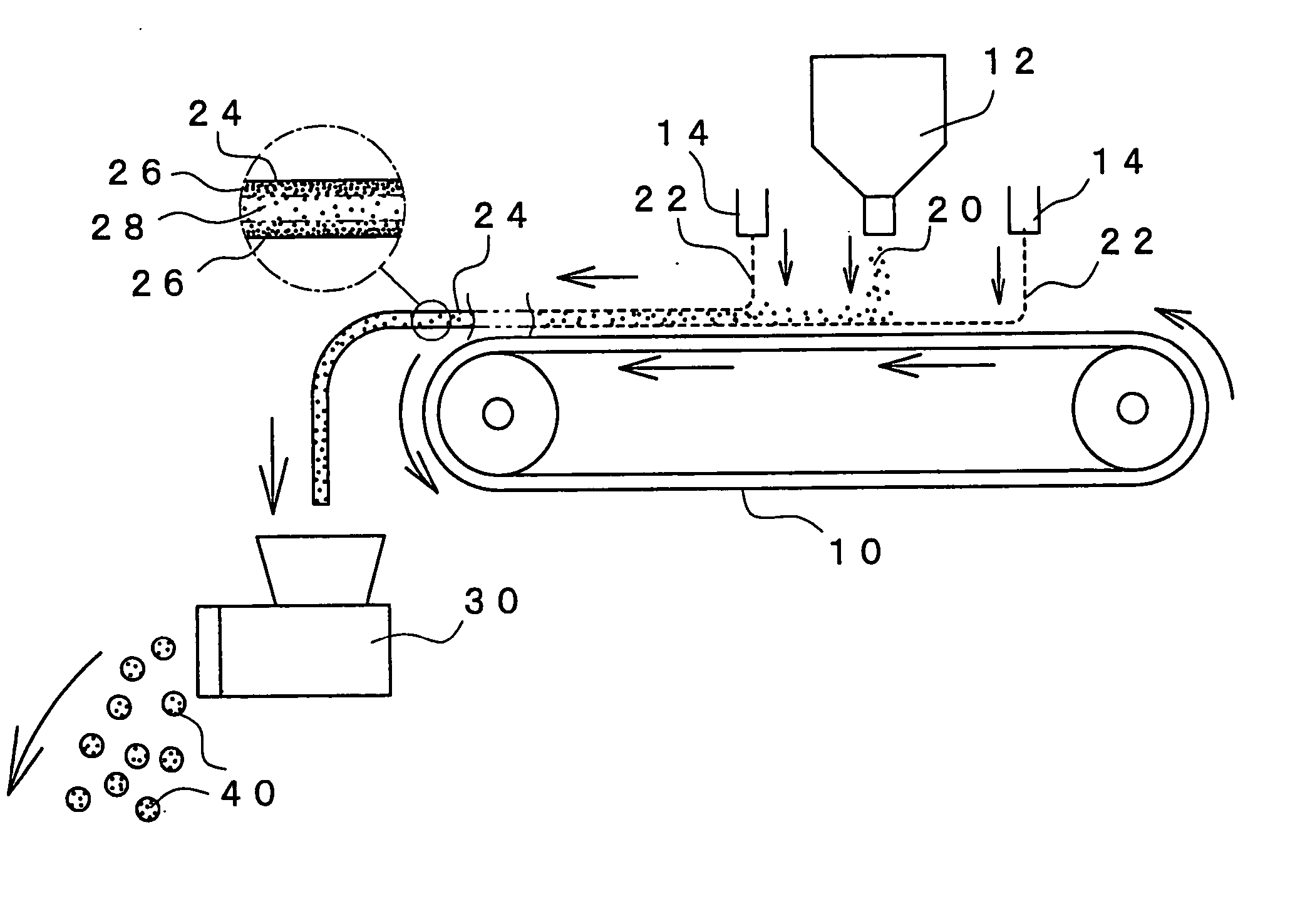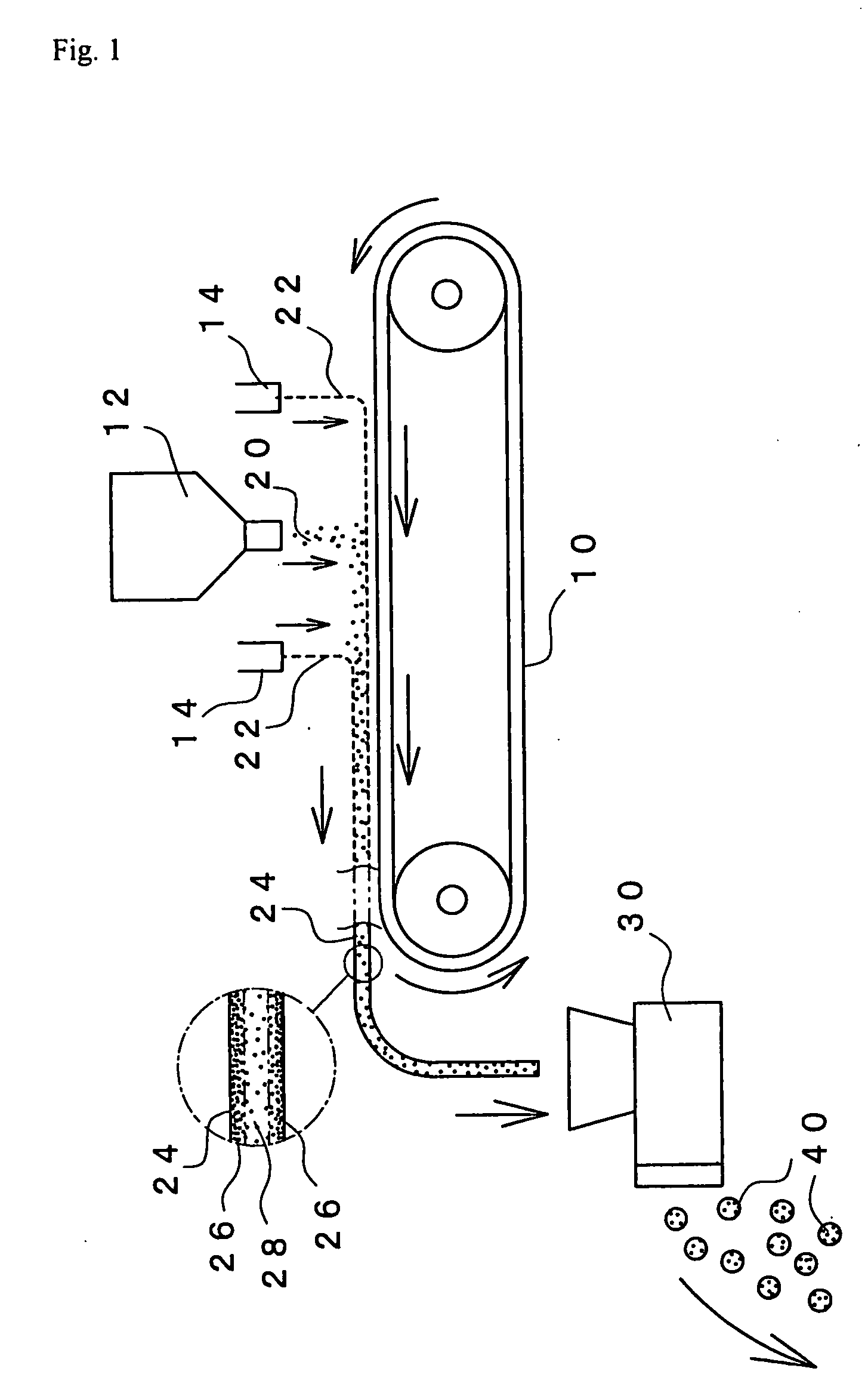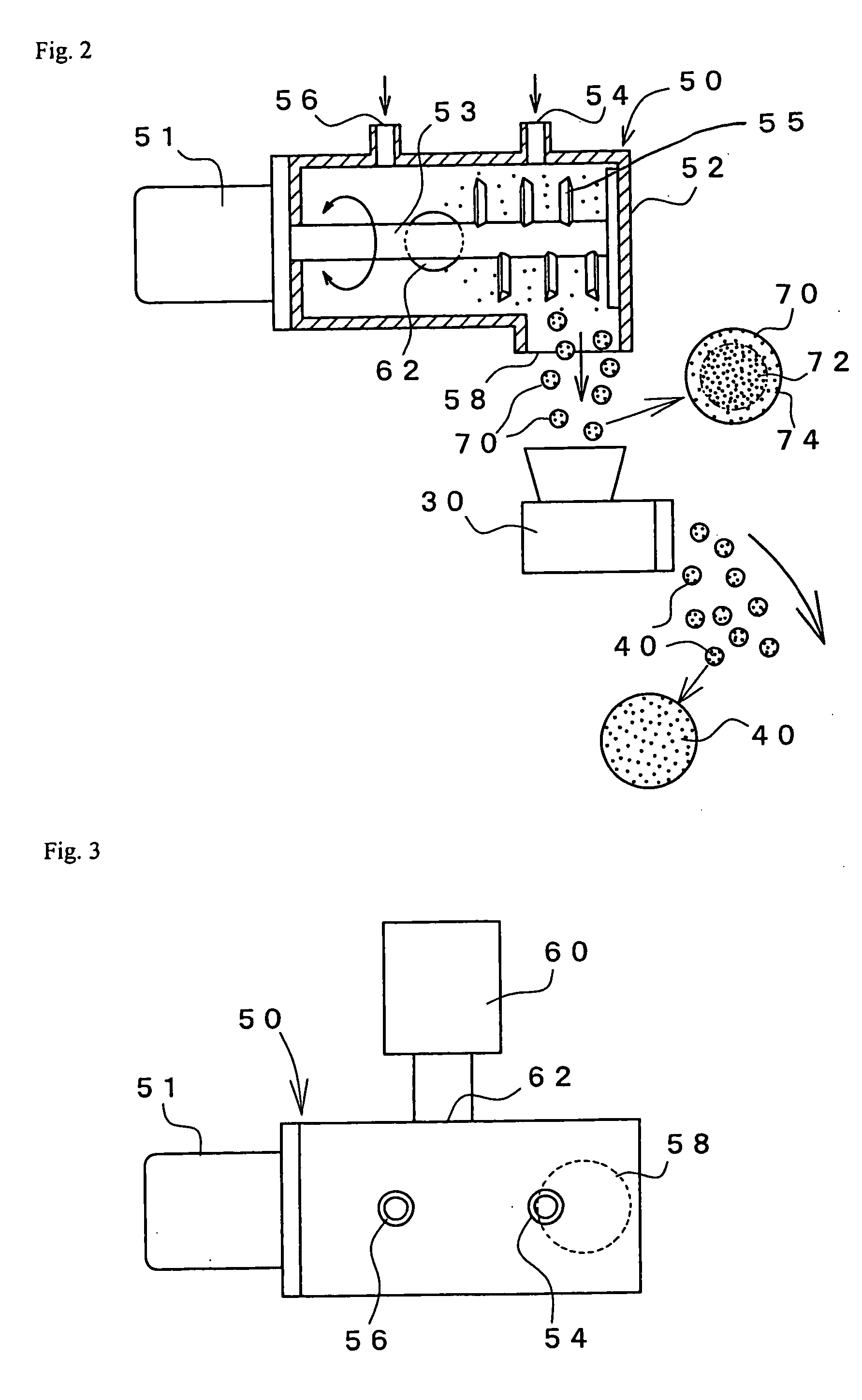Process for production of water-absorbing material
a technology of water-absorbing material and process, which is applied in the direction of other chemical processes, grain treatment, coatings, etc., can solve the problems of fine powder, inability to uniformly add aqueous liquid to it, and not only the cost problems, so as to achieve strong tackiness or adhesion, easy to dry and remove water, and easy to handle
- Summary
- Abstract
- Description
- Claims
- Application Information
AI Technical Summary
Benefits of technology
Problems solved by technology
Method used
Image
Examples
example 1
Via Particulate Hydrous Material of Water-Absorbent Resin (Process 1):
[0211] An amount of 500 g of the water-absorbent resin powder (.alpha.2) (having particle diameters of smaller than 150 .mu.m), which had been obtained from Referential Example, was placed into 5-liter Lodige Mixer (M5R type, produced by Gebruder Lodige Maschinenbau GmbH). Then, while the main shaft (plow-shaped blades) of the Lodige Mixer was revolved at a high speed of 330 rpm, 330 g of water was added thereto all at once.
[0212] Immediately after the addition of water, the stirring was stopped, and then the resultant hydrous material of the water-absorbent resin was quickly got out.
[0213] The resultant hydrous material of the water-absorbent resin was the reversed-fisheye-shaped hydrous material 70 of the water-absorbent resin of about 10 mm in average particle diameter having a lower water content in the surface and a higher water content in the central portion.
[0214] The outside and inside water contents of th...
example 2
Via Sheet Hydrous Material of Water-Absorbent Resin Constituted by Three Layers Having Different Water Contents (Process 2)
[0218] The apparatus of FIG. 1 was used. A thin layer of water was formed on the upside of the belt conveyor of 50 cm in width (which was being run at a set speed of 0.58 n / min (10 Hz) and of which the surface had been coated with a fluororesin) by supplying thereto water at 17.79 g / min from a spray nozzle (KB80063 produced by Ikeuchi) as disposed above the belt conveyor. The water-absorbent resin powder (.alpha.2) (having particle diameters of smaller than 150 .mu.m), which had been obtained from Referential Example, was placed into an accurate feeder (produced by Kuma Seisakusho), and the amount of the fine powder being supplied by this feeder was set at 90 g / min. Incidentally, the water-absorbent resin powder (.alpha.2) had beforehand been heated to 70.degree. C. This water-absorbent resin powder (.alpha.2) was supplied by the above feeder onto the belt conve...
example 3
Via Particulate Hydrous Material of Water-Absorbent Resin (Process 1):
[0222] The apparatus of FIGS. 2 and 3 was used. The water-absorbent resin powder (.alpha.2) (having particle diameters of smaller than 150 .mu.m) was supplied at 835 g / min by an accurate feeder (produced by Kuma Seisakusho) from the fine-powder-supplying inlet of the continuous extrusion mixer (of which the number of revolutions of the main shaft had been set at 1,500 rpm), and the aqueous liquid was supplied at 450 g / min from the aqueous-liquid-supplying inlet, and further, compressed air was supplied at 150 liters / min from the air-supplying inlet, thus obtaining a reversed-fisheye-shaped hydrous material 70 of the water-absorbent resin, of which the surface had a lower water content, and of which the central portion had a higher water content.
[0223] The resultant reversed-fisheye-shaped hydrous material 70 of the water-absorbent resin was quickly placed into a meat chopper (TB32 type, produced by Hiraga) having ...
PUM
| Property | Measurement | Unit |
|---|---|---|
| Percent by mass | aaaaa | aaaaa |
| Percent by mass | aaaaa | aaaaa |
| Percent by mass | aaaaa | aaaaa |
Abstract
Description
Claims
Application Information
 Login to View More
Login to View More - R&D
- Intellectual Property
- Life Sciences
- Materials
- Tech Scout
- Unparalleled Data Quality
- Higher Quality Content
- 60% Fewer Hallucinations
Browse by: Latest US Patents, China's latest patents, Technical Efficacy Thesaurus, Application Domain, Technology Topic, Popular Technical Reports.
© 2025 PatSnap. All rights reserved.Legal|Privacy policy|Modern Slavery Act Transparency Statement|Sitemap|About US| Contact US: help@patsnap.com



